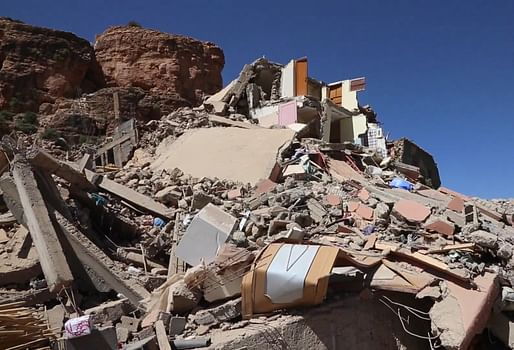

The rush to blame the destruction that ensued in the wake of this month’s devastating 6.9 magnitude earthquake in Morocco on rammed earth and the region's other traditional earthen construction methods is a flawed conjecture, according to an explanation penned recently by University of York lecturer Louise Cooke.
In an article featured in The Conversation over the weekend, Cooke refuted some of what she calls inaccuracies latent in the popular media narrative about the country’s traditional architectures, namely that their structural designs make them susceptible to collapses during seismic events. She says the popular consensus about traditional architecture is a mischaracterization, adding that the disaster’s true culprit lies in a hastened shift away from age-old building and maintenance methods caused by outside influence from modern Western design.
“In the immediate aftermath of an earthquake, it is common for local building cultures to be blamed for their own destruction,” the conservation expert explains. “My research into earth buildings shows, however, how this type of structure is in fact designed to be resilient. Vulnerabilities arise when patterns of knowledge transfer — and the traditional systems of repair and maintenance — are disrupted. Further, when new materials, such as concrete and cement, are introduced, they can be incompatible and so can reduce the buildings’ seismic resilience.”
“When the knowledge and skills required to look after historic buildings, or build new ones using traditional methods is lost, the structures in question become more vulnerable. They can either suffer from inadequate maintenance or alterations — such as replacing earth plaster with concrete render — which makes them weaker,” Cooke continues.
A decline in skilled workers trained in traditional maintenance techniques is aided only by the repetition of these claims, the argument continues. These claims add the question of colonialism to a body of scholarship that has demonstrated earthworks architecture’s seismic resilience vis-à-vis structures built using the slate of modern materials mentioned (e.g., breeze block and cement).
Cooke's research has bearings on the recent Turkey-Syria earthquake, which destroyed more than 150,000 structures.
A list of humanitarian resources working in Morocco can be found here.
No Comments
Block this user
Are you sure you want to block this user and hide all related comments throughout the site?
Archinect
This is your first comment on Archinect. Your comment will be visible once approved.